Whether your bathroom is a carefully crafted space dedicated to pampering or a beautifying closet that serves only one purpose, it needs a faucet. Finding the right one for the space is important, but given the abundance of styles and options, this might be a proposition to try.
Whether you are planning a kitchen remodel or a bathroom remodels, a faucet is an essential element that faithfully delivers hot or cold water on demand. However, we hardly notice them until they start leaking or it’s time to buy another one. Today’s faucets perform better than ever, are feature-rich, last longer, and are easier to install. This faucet buying guide will help you narrow down your faucets to find one that fits your home in function, style, and price.
1. Basic faucet functions
What’s in the faucet? Almost every faucet has three basic elements: the control, the spout, and the sprayer.
1) Control
Whether it’s two handles or a lever, the faucet control activates the water, switches between hot and cold, and mixes the two temperatures. Controls can even be hands-free or touch-sensitive.
2) Nozzle and body
The spout and body of the faucet determine the appearance and function of the faucet. Spouts can be low and out of the way, or long-necked, high, and arched to better accommodate colanders and cauldrons.
Popular finishes such as chrome, nickel, and stainless steel complete the look.
3) Sprayer
Features once considered extras, like sprayers, are now commonplace on more modern faucets. Valuable for filling large pots and cleaning dishes, sprayers are sometimes integrated into the spout (pull-down or pull-out) or set aside, on a sink apron or countertop.
(Another related post: Custom Faucet: An Ultimate FAQ Guide)
2. Faucet types
What types of bathroom faucets are there in the market? Which can you use and where will it go? On the countertop of the dresser? Directly on the sink deck? on the wall? How many holes are available for the faucet? Knowing which ones can be installed easily, which ones require extra work, and which ones won’t work in your bathroom is key to saving time and eliminating confusion.
1) NICEMOCO faucets
NICEMOCO faucets are easily recognized by their “one piece” design which includes two handles on the deck plate. They’ve long been a standard in most bathrooms (although their popularity appears to be waning), and are perfect for small sinks and tight spaces. These faucets require three holes in the sink or mounting surface; the distance between the handles is 4 inches (measured from the center of each hole). If you are replacing a center faucet, it is usually best to use another center faucet, a “mini spread” faucet, or a single-handle faucet with a faceplate (to cover the unused hole).
2) Widely available faucets
Widely available faucets require three holes and typically have their handles set at 8″, but adjustable models can accommodate distances up to 16″. Given their wide spacing, these faucets do not use a faceplate; the spout and handle are mounted separately. If you have more sink or counter space and like the look/operation of a two-handle faucet, an all-purpose model is for you.
3) Minispread faucets
Minispread (or “mini-widespread”) faucets are the centers and widespread faucets have a baby thing. Using the same dimensions as centerpieces (4 inches between centers of handles), but eschewing deck boards in favor of individually mounted handles like widely available faucets, the Mini Spout brings a modern touch to any small space.
4) Single-lever faucets
Single-lever faucets are one of the most common bathroom faucets, along with center faucets. They usually only use one hole and can be designed with a small footprint (covering only a single hole) or with a wide deck to cover any unused holes on the sink deck/countertop. Some models will have the spout separate from the handle, thus requiring two holes.
(Another related post: Smart Faucet: All You Need to Know)
5) Wall-mounted faucets
Wall-mounted faucets are most often associated with kitchens but are also increasingly appearing in bathrooms. They can be used anywhere, but these faucets are best suited for container sinks (or even pedestal sinks) that sit above the counter, given the height of the faucet relative to the top of the counter. Wall-mounted faucets almost always have two handles and generally follow the widely used spacing convention for faucets of 8″ fixed centers, or adjustable centers for smaller or larger spacing.
Pro tip: Wall-mounted faucets require more measuring and planning than other options. You want to make sure the spout extends well over the sink and is in a comfortable position for your various daily activities. Consider the angle of the spout outlet, the height of the spout, and the height of the sink walls: depending on the strength of the water stream – and hand position when washing – the splash may wet the floor/countertop.
6) Vessel faucets
Vessel faucets are taller than most faucets and usually have only one handle. Sometimes called “tall spout” faucets, they are tall enough to accommodate a vessel sink that sits on the countertop. You need to make sure that the faucet not only flows off the edge of the sink but also in a visually pleasing way; a faucet that is only 1 inch from the sink may look and feel awkward (depending on the angle of the water).
In addition to sink type and sink configuration, it’s important to consider how the faucet will be installed, the number of handles required, and the type of sprayer you prefer.
(Another related post: Touch vs. Touchless Faucet: What is the Difference?)
7) Deck-mounted faucets
Deck mount
The deck-mounted faucet is contained on an integrated faucet bracket. The controls are tight and tight. However, the cluster design can make cleanup more difficult.
Anti-installation
Counter-mounted faucets move the faucet over the sink apron, tucking it back onto the countertop behind the sink.
This frees up more sinks. Deck-mounted faucets cost more overall and require additional countertop fabrication expenses.
8) Double handle faucets
The two-handle faucet is simple and classic. This type of faucet rarely fails because it has no mixing cartridge.
But the controls are spread out and take up more sink apron or countertop space than a single-handle unit.
9) Pull-down, Pull-out, or Side Spray
Pull Down Sprayer
The pull-down faucet sprayer converts from an arched fixed nozzle to a hose sprayer simply by pulling down the nozzle tip.
Pull-down sprayers are great for filling large plant pots and are best for large farmhouse sinks. But sometimes, the sprayer won’t retract fully when the counterweight gets stuck on an obstacle under the sink.
Pull-Out Sprayer
A pull-out faucet sprayer is similar to a pull-down faucet, except that the sprayer is pulled directly forward toward the user.
Pull-out faucet sprayers have a lower profile, which means they are less prominent on the sink. They also have a long hose that reaches all areas of the basin. But they don’t work well in large pots, and they usually don’t retract like pull-down models.
Side Spray
Side sprayers fit into holes in faucet bases, sink backsplashes, or drilled holes in countertops.
They are flexible. But they do take up extra countertops, sink aprons, or mounting plate space.
(Another related post: Top 10 Best Tap Manufacturers In India)
3. Counterbore configuration
The sink’s pre-drilled holes—the number and configuration—are an important factor when choosing a faucet.
Always consider the number of holes in your sink and their configuration. If you are replacing the faucet and keeping the existing sink, the configuration must match. But if you’re planning to replace your sink, that’s less of a concern, since you can buy a new basin to match the configuration of the faucet.
TIP: Since the deck may cover the hole configuration of the sink, look under the sink cabinet to count the holes.
1) Nonporous
Counter-mount or wall-mount sink faucets are suitable for sinks that do not have pre-drilled holes.
Counterbuilders drill holes in countertops, and builders drill holes in backsplashes.
2) A Hole
All the hoses for sinks with one hole come from below, in one bundle. Faucets for this type of sink have controls on the body of the faucet.
3) Two Holes
Two-hole sinks have a main sink faucet assembly that receives water through one hole. A sink sprayer or soap dispenser can be inserted in the second hole.
Tip: If you have a two-hole sink and don’t need the second hole, it can be easily covered with an inexpensive round plastic dish that is mixed with the sink material.
4) Three Holes
Three-hole sinks are common because they allow the user the flexibility to add two handles and a faucet without using a countertop to cover up unwanted holes. However, almost every “single-hole faucet” includes a deck plate to cover the two extra holes, if you prefer the style and currently have a three-hole sink.
5) Four Holes
Four-hole sinks are also common because the sink sprayer can be set aside rather than clustered with the rest of the sink controls.
(Another related post: Top 10 Faucet Manufacturers in China)
4. Material and valve
To choose the best faucet, you need to have an understanding of its inner workings. The faucet’s material of construction and its valve or cartridge type is a true sign of quality.
1) Material types
- Metal alloys: When you see “metal construction” on a package, it may not be as good as it sounds: this usually refers to something called Zamak (or Zamac), which is a zinc, copper, A low-grade alloy of magnesium and aluminum. Often chromed or brass-plated, these zinc-alloy faucets are an upgrade from plastic faucets, but should only be considered for the tightest of budgets. Get ready to replace those faucets ASAP.
- Plastic: Plastic faucets should be avoided. Not only are they cheap, but they’re often “cheap” – expect plastic faucets to have a shorter lifespan than other options, especially in hard water areas where the internal components degrade much faster. The only exception is the newer PEX-based faucets, which utilize the internal PEX waterways to completely eliminate the threat of lead (lead can still be legal at up to 0.25% by weight). These PEX faucets usually have a metal body, which is usually better than regular zinc alloy faucets.
- Brass: Still the standard, still (usually) the best. An alloy of copper and zinc, solid brass faucets have a solid reputation for quality and durability. Don’t confuse them with brass-plated faucets, which hide inferior alloys underneath. Although a solid brass faucet costs more than the options above, it is a better and longer-lasting investment.
- Stainless Steel: The only truly lead-free option besides plastic, stainless steel is also highly resistant to corrosion. Robust, high-quality stainless steel faucets complement the finest solid brass models. Make sure you only focus on Type 304 stainless steel, which is a higher quality steel that contains more chromium and nickel than other types of steel.
2) Valve/filter type
Compression and ball valves were once the primary means of controlling water flow from faucets. However, the industry has largely moved away from them in favor of superior spool technology.
- Standard cartridges are mostly made of brass or plastic (often both). They seal tightly within the faucet body or its handle; the flow and/or mixing of hot/cold water is controlled by the opening or closing of different spaces within the cartridge depending on the position of the handle. It’s true that the best faucets won’t use this basic element. But these are still huge improvements over compression and ball faucets.
- Ceramic disc cartridges use ceramic discs that move against each other to control temperature and flow (almost all faucets that use them are single handles). In addition to their exceptional durability (many ceramic cartridges are backed by a lifetime warranty) and superior performance, ceramic disc faucets have the added benefit of being surprisingly easy to operate: just a gentle quarter turn opens them.
(Another related post: How to Identify Your Kitchen Faucet Brand?)
5. Handle and function
The following are handle and function.
1) Handle type
The choice of handle type is important, based on decisions about style and comfort: after all, it’s part of your faucet that you touch most often.
#1. Knob handles
Knob handles were common on older faucets (remember those acrylic behemoths?) but are usually only found on economy faucets these days. They can be a challenge for small children and adults with weakened hand/wrist strength.
#2. Cross handles
Cross handles are an attractive option, especially in traditional designs. Unlike knob handles, cross handles are finished for a better fit (some even use porcelain to great effect). Often easier to operate than knobs, but they can still cause problems for some users. However, they are the easiest type to turn with wet hands.
#3. A lever handle
A lever handle may refer to a two-handle faucet whose lever can only be turned (like the knob and cross) or a single-handle faucet with a turn-and-lift handle (probably the most common type today). These are the easiest handles to use and are usually the type of handles found on ADA faucets. The most common tap with a lever handle is in a crowded place such as an office building or a factory. For example, one of my clients is a low voltage switchgear manufacturer. Once he invited me to visit his factory. And I found that the toilets in his factory were equipped with lever-handle faucets. He told me it would be easier for the staff to use.
#4. Joystick handles
Joystick handles are similar to single-lever levers, but are usually thinner and move slightly differently (though just as easily). Joysticks are most commonly found in modern/contemporary bathroom designs.
#5. Touch activation and touchless/motion activation
These technologies are relatively new to the residential market and allow for more convenient and hygienic faucet control. Some models have a handle to set the water temperature that acts as a manual operation, others have a control box under the sink. These faucets require power — batteries or a nearby outlet, depending on the model. Metered taps, which are activated at the push of a button and remain open for a given period of time, may also be considered part of the range, but are most commonly found in commercial settings.
(Another related post: What are the Best Materials for Bathroom Faucets?)
2) Special function
The following are the special functions of faucets.
#1. Drain assembly
Some faucets come with a drain assembly (applicable models include a lift lever for sink filling), and some don’t: Just be sure to read the listing and packaging carefully so you know exactly what you’re getting. Drains, lifters, and plugs can be purchased separately, often with matching finishes provided by the faucet manufacturer (although in many cases third-party finishes are sufficient to match the drain trim).
#2. Water conservation
WaterSense is a highly successful EPA program to reduce water waste. WaterSense-certified bathroom faucets have a maximum flow rate of 1.5 GPM and are independently tested to ensure high performance. Choosing faucets with the WaterSense label can save water and money – and might even qualify you for local rebates.
#3. Anti-scald
Anti-scald is a good idea in most situations, but especially when it comes to young children, the elderly, and people with limited mobility. Protection is necessary if the person using the faucet reacts quickly, operates the faucet handle, or cannot easily discern the water temperature by hand. Unfortunately, the ADA guidelines don’t address scalding, so don’t assume that the ADA-compliant faucet you want includes a scald-prevention device (usually a handle stop that prevents the handle from moving too far on the hot side).
If you can’t find the right faucet with an anti-scald function. You can install a thermostatic mixing valve under the sink. These valves mix cold and hot water to a user-defined temperature, which is then delivered to the faucet. You need a 2-outlet valve so cold water can still be delivered to the faucet.
#4. ADA compliance
ADA compliance means the faucet meets standards for handle placement and operation (as well as metering the minimum length of time the faucet remains open – 10 seconds) so that it can be used by people with disabilities. The ADA faucet handles (usual levers) require no grasping and can be turned with minimal effort. To meet ADA requirements, they must be installed over ADA-compliant sinks but can be used anywhere a particularly easy-to-operate faucet is required.
#5. Integrated sprayer
Pull-down/pull-out shower faucets are fast becoming a must-have in the kitchen and can be used in the bathroom as well. Often touted as a convenient option for cleaning and watering plants, you may find more use for the integrated sprayer. While bathroom sprayers may not be used as much as in the kitchen. You should still look for ones that use braided nylon or stainless steel for longevity.
(Another related post: Kitchen Faucet: An Ultimate FAQ Guide)
6. Types of faucet finishes
Brushed metals such as stainless steel, bronze nickel, or matte black can hide fingerprints. Chrome and gold tend to leave fingerprints, but wipe off easily.
- Stainless Steel: Timeless matte stainless steel gives the faucet a soft brushed metal look.
- Nickel: Nickel finishes are slightly less lustrous than stainless steel and have a warm, neutral tone that complements other colors in the kitchen.
- Chrome Plating: Faucets with a chrome finish are highly reflective and have a smooth, mirror-like appearance.
- Bronze: Bronze has a traditional oil-rubbed look and works well with off-white, gray, and tan paint colors.
- Black: Black is a universal color that goes with just about anything. So a matte black finish faucet can complement all types of kitchen layouts and decors.
- Gold: Gold finishes are trending again. They come with warmer undertones, a departure from the glitzy golds of decades past.
7. How to choose the right finish?
- The finish is largely a personal choice, but there are some practical issues to consider as well. Got a toothbrush mess at home? Toothpaste splatters are more prominent on dark surfaces. If you have hard water, these deposits will also burst against a darker background. Fingerprints and water spots tend to stand out on chrome and other shiny surfaces. If these things bother you, consider a light matte finish.
- If you’re not a frequent/compulsive cleaner, you should probably avoid ornate designs with grooves and deep cutouts. As with dark finishes, problems like soap scum, toothpaste splatter, and water spots will be magnified.
- The most durable finish is still good chrome. However, manufacturers have made great strides in the quality of finishes over the years. If you need the most durable finish but standard chrome isn’t to your liking, look for a PVD finish. Physical Vapor Deposition uses vacuum pressure and electrical charges to create unrivaled surface treatments.
- Most cleaners aren’t your friend (there are exceptions) – but the manufacturer’s cleaning advice is! If you can’t find anything on the paperwork or on their website, you can never go wrong with a homemade soapy water and/or vinegar solution. And if you’ve never used them, you’ll be amazed at how well they work. Try to use only soft cloths, non-abrasive sponges, or paper towels when cleaning. While some may scoff at this “harmless” cleaning technique, doing it on a regular basis (rather than removing a month’s worth of grime with industrial chemicals) is better for both the faucet and the environment.
(Another related post: Kitchen Faucet Flow: Everything You Need to Know)
8. Faucet cost by type
| Type Cost | Cost |
| Pull down faucet: | $60 – $1,100 |
| Pull-out faucet: | $55 – $800 |
| Single faucet: | $25 – $800 |
| Double handle: | $22 – $800 |
9. Conclusion
This is a complete introduction to how to buy a faucet. If you are looking for a reliable faucet manufacturer, you may wish to contact Nicemoco.
How useful was this post?
Click on a star to rate it!
Average rating 5 / 5. Vote count: 4
No votes so far! Be the first to rate this post.
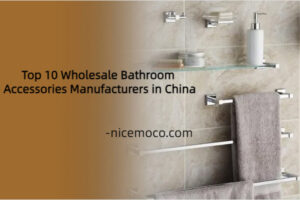

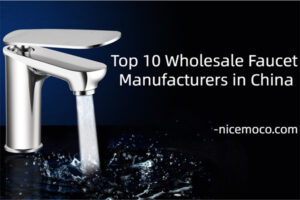




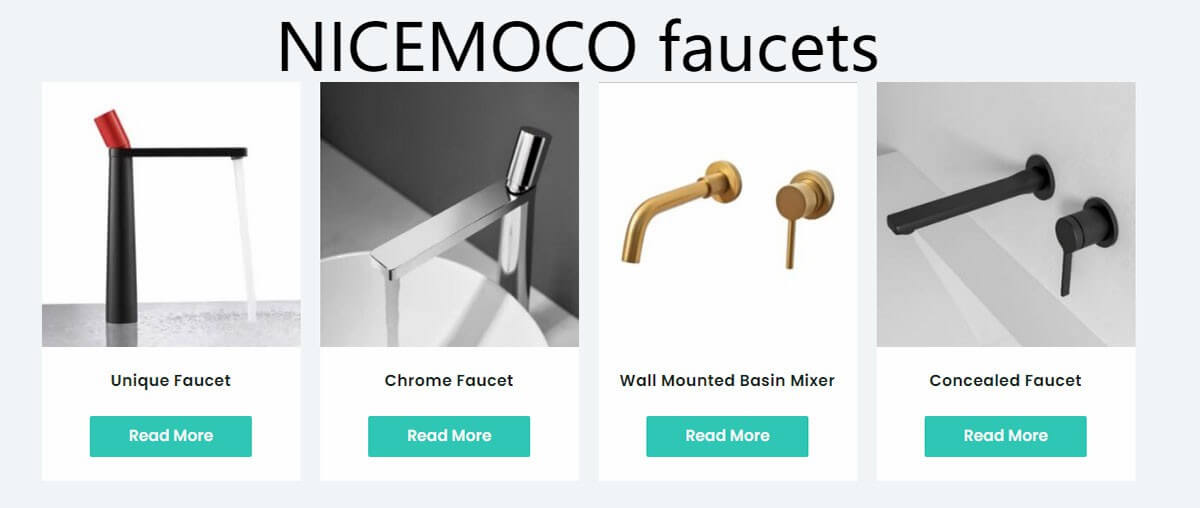
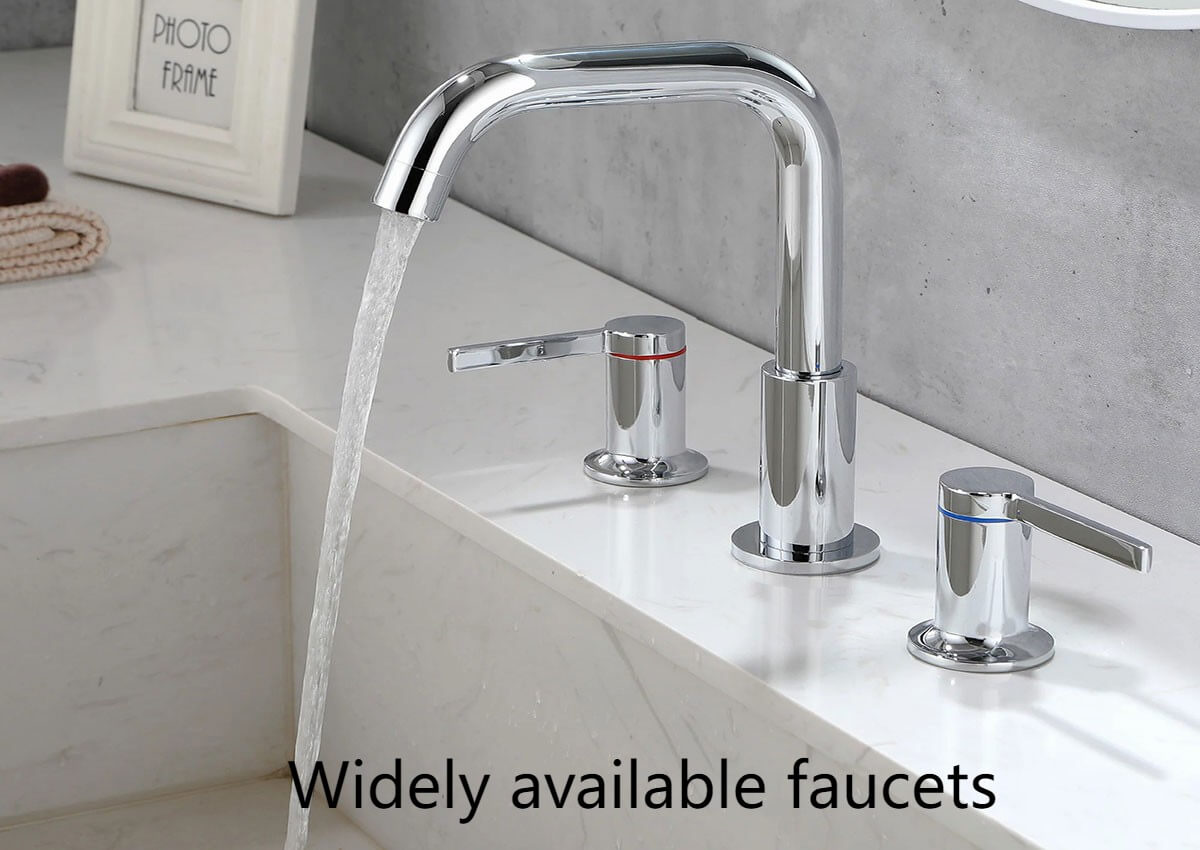
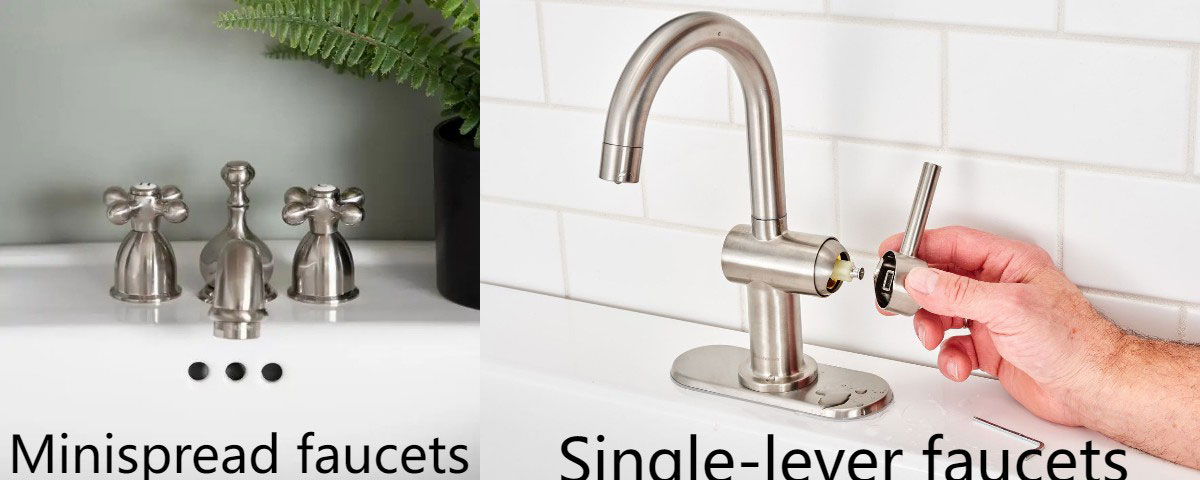
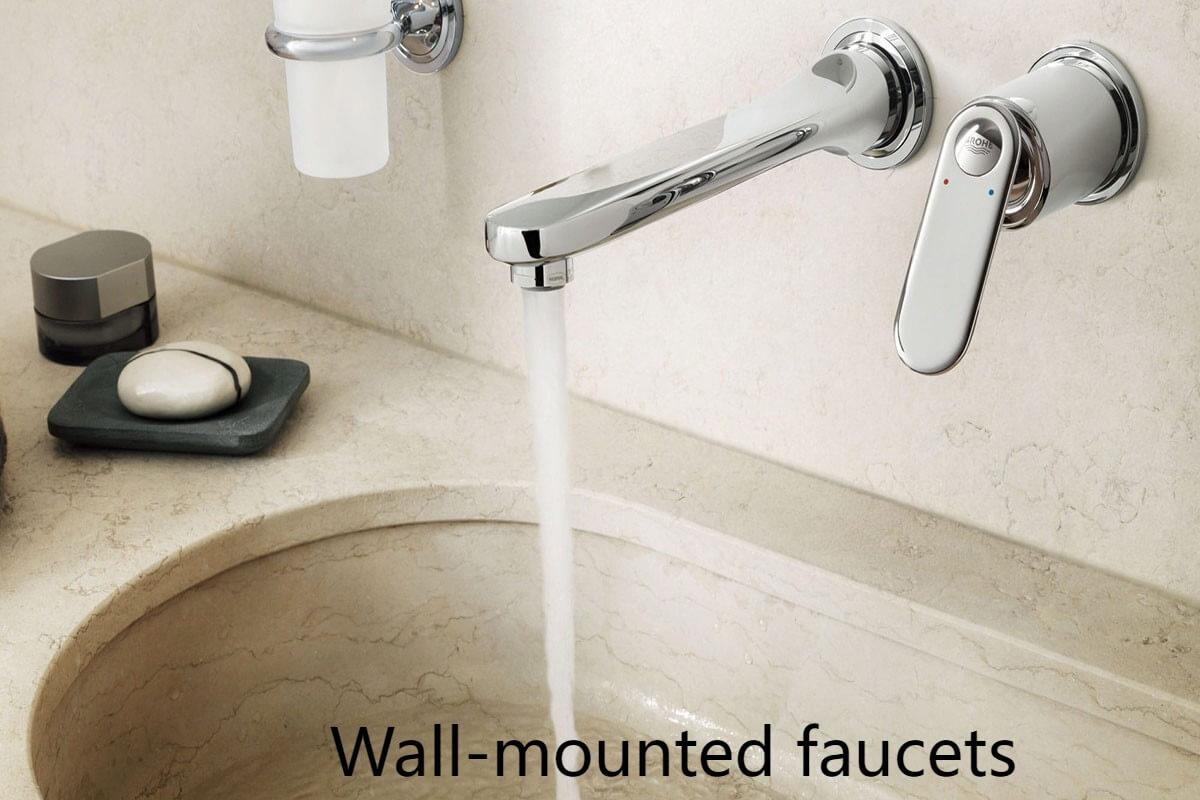

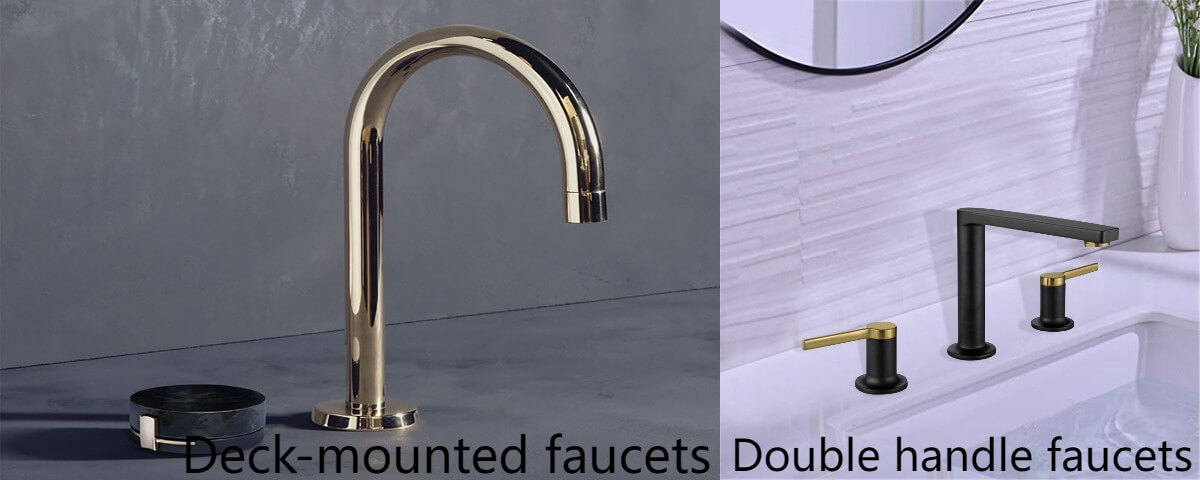



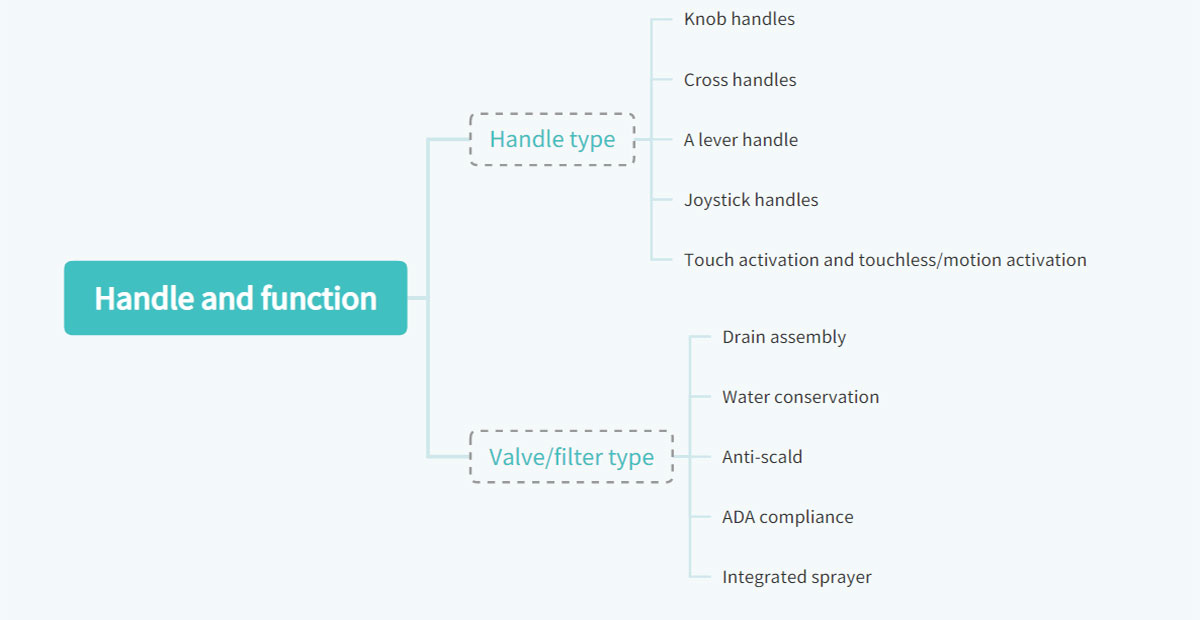
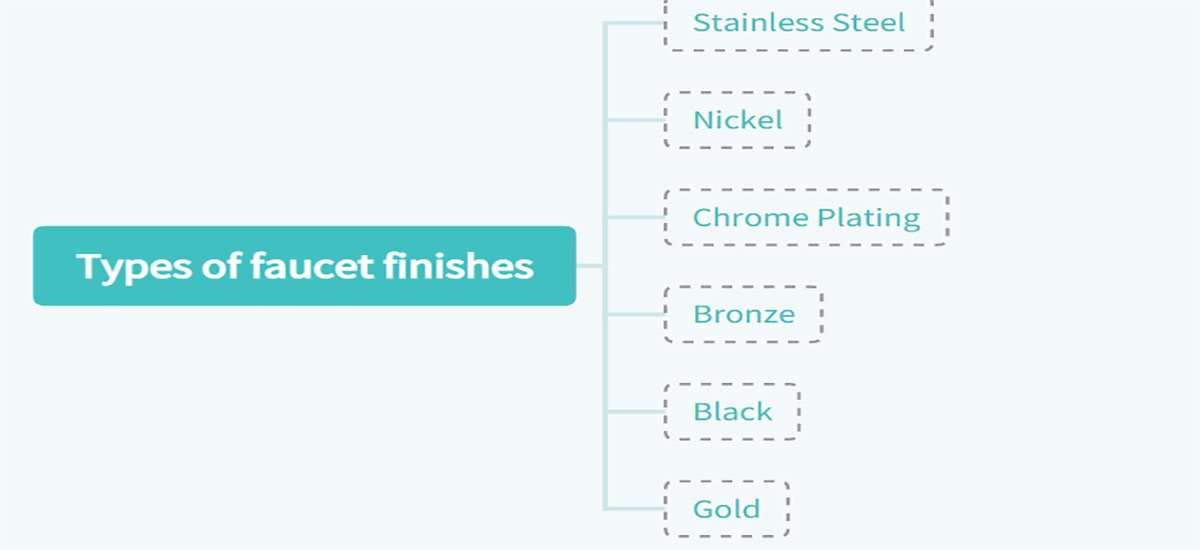

1 thought on “A Complete Guide for Buying Faucets”
Thanks…It’s a lovely note. This is more helpful to understand more about Buying Bathroom Faucets. I love the information I have gathered here, thanks so much, and keep up the good work. It has helped me